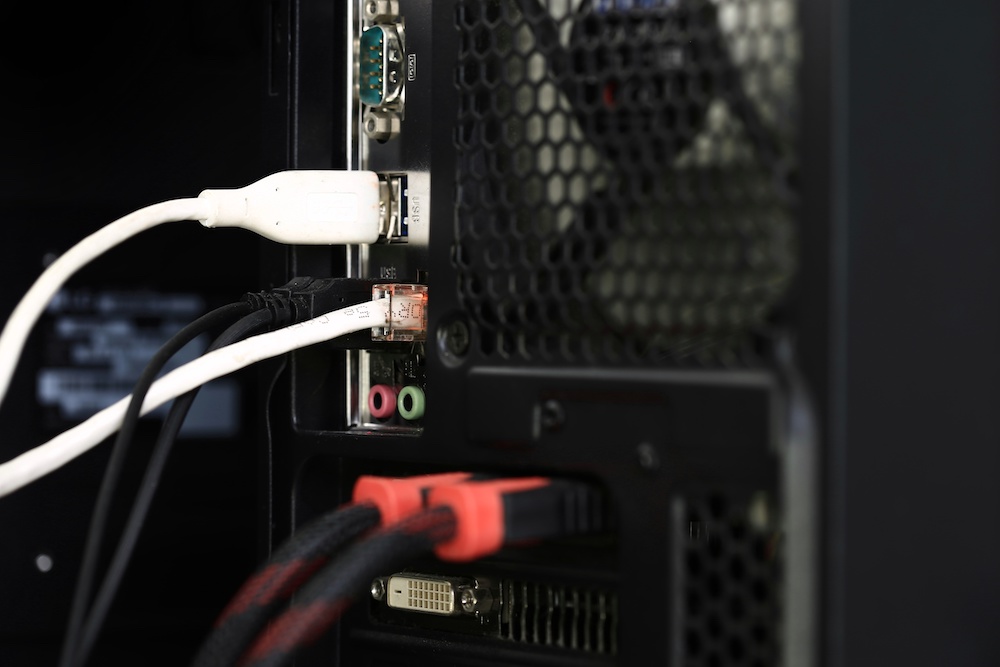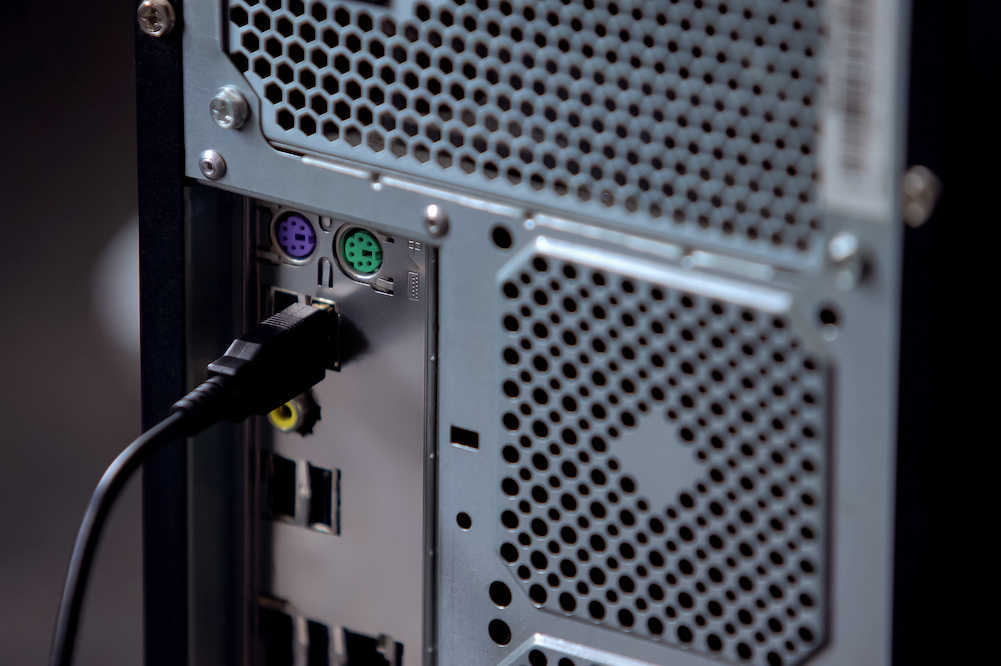Motherboard HDMI Not Working: Troubleshooting Tips
We may earn a commission for purchases using our links. As an Amazon Associate, we earn from qualifying purchases.
Your motherboard has all the connectivity ports for everything, including audio and visual features.
However, there may come a time when you may be dealing with some issues.
HDMI ports are used for connecting one or more monitors to your computer system.
Even if you have a high-performing motherboard that hardcore gamers drool over, that doesn’t mean it’ll be free of any issues.
Is your motherboard HDMI not working? Are you not seeing anything on your monitor when it’s connected?
Don't worry; there are troubleshooting techniques that you can easily employ to resolve the issue.
Let's learn more about HDMI port on motherboard not working causes and how to solve the issues quickly.
How Do I enable HDMI on My Motherboard?
Knowing how to enable motherboard HDMI is simple. You can utilize your motherboard’s BIOs to do this.
That said, you’ll also want to take into account the kind of CPU you’re using.
Some CPUs will not have a graphics core that will allow you to use HDMI, for example, the Ryzen 7 1700.
The keyword that you need to look for in a CPU is integrated graphics.
Contrary to belief, your HDMI runs on integrated graphics from the CPU and motherboard and not your graphics card.
Now that you have a motherboard and a compatible CPU with integrated graphics, you can enable the HDMI by accessing your motherboard’s BIOs.
ALSO READ: How to Install a Motherboard?
For Windows
If you have a Windows operating system, follow along below:
1. Set Up the Display Adapter
Go to your Device Manager in Windows and find Display Adapters.
Identify your integrated graphics. There should be two display adapters located in the menu below.
One of them will be integrated graphics like Intel or AMD.
2. Enable Integrated BIOs Graphics
Now, you’ll want to enable the integrated graphics in your BIOs. This means restarting your computer.
Each operating system will be different in terms of how you access the boot menu.
You can try tapping it repeatedly or holding down buttons like F1, F2, F8, F12, Delete, or Escape.
Also, there can be a prompt located on the boot screen telling you what button to press. Alternatively, you can refer to your motherboard’s owner's manual.
Once you’ve accessed the BIOs menu, be very careful when pressing buttons. One wrong press of the button, and it will send things into chaos for your operating system. With that in mind, go to your advanced settings.
Look for and choose “System Agent Configuration” and then go to graphics configuration.
Next, look for the option “Enable GPU” or “Integrated Graphics,” or “IGPU Multi-Monitor.”
Enable the setting. You may need to press Enter again to re-confirm. Restart the computer to ensure the changes take effect.
3. Connect the Monitors
You need to connect two monitors. Your primary one will be connected to the HDMI port that is connected to your video card.
The secondary monitor will be connected to the port located on your motherboard.
Once you have booted windows, confirm the connectivity by going to “Display Settings.”
To access it, right-click anywhere on the desktop away from the menu and choose the option. Adjust the various display settings as you like.
If the secondary monitor is not recognized, you’ll need to install the latest integrated graphics drivers.
First, you’ll want to access your Device Manager and search for “Other Devices”, where you’ll find unidentified devices like your secondary monitor.
You can manually find the latest drivers or have Windows automatically search for them.
4. Restart
Restart your computer and wait for the monitor to be detected. If you see your screen pop up, then you have successfully updated the drivers.
Now that you know how to enable motherboard HDMI, it will be easy to do for future builds or switch out the old with the new.
Remember to double-check the BIOs and see that they are enabled.
This way you can successfully use multiple displays while playing games or performing multiple tasks.

Why Did My HDMI Port Stopped Working?
If you are running a computer with dual monitors and your HDMI stops working, this could be due to various issues.
Below are some tips you want to consider in the event of this motherboard HDMI not working issue happening.
They can help you whittle down what could be the problem.
1. Check the HDMI Cables
The HDMI connection would be the first thing to check out. See if the cables are connected properly.
Sometimes, an ill-connected cable can stop the HDMI from working. Just plug it back in and check to see if it’s secure.
2. Use a Different HDMI Input
If you have spare HDMI inputs, consider using one of the available extras.
You can check the signal and then plug it back into the other HDMI port.
If you run into the same problem with the old HDMI port but not the other one, then the fault lies within the former.
3. Turn on Your HDMI Connected Appliances in Reverse Order
For example, if you turn on the TV first before your computer monitors, do the reverse.
If you have multiple HDMI ports, play around with a few combinations or sequences of powering on your devices.
4. Look for Firmware Updates
Sometimes, it just might take a simple firmware update to fix the problem.
Some of the most common HDMI problems can be solved with ease through an update.
Check to see if your TV or computer has an available firmware update. If there is, install and restart.
If there is still one HDMI not working, you can always use available open ports. Otherwise, you may want to get it repaired by a professional.
Don’t throw away money on replacing the motherboard outright because of a broken HDMI port.
The ports can be repaired or replaced by a computer repair shop near you but may cost you a bit of extra cash.
Can I Use HDMI on My Motherboard?
Considering that we have mentioned connecting a secondary monitor to the HDMI port on your motherboard, the answer is yes.
You want to make sure, though, that you enable the BIOs before you even connect an HDMI cable to the motherboard.
What if you want to use the HDMI on your motherboard instead of on the graphics card? You may want to give it a try.
Keep in mind that there may be a difference in terms of graphics, depending on which has the better onboard settings.
If you plan on using an HDMI port on your motherboard, just follow the BIOs instructions listed above, and you should be in good shape.
Can I Use Motherboard HDMI and Graphics Card?
Again, you can use both the HDMI from your motherboard and your graphics card.
Ideally, you can do this if you plan on using more than two monitors on your computer.
After all, both your graphics card and your motherboard will have at least two HDMI ports apiece.
This means you can connect up to four display monitors at the same time.
With that in mind, there is one thing you need to do before giving this a try. That is to see if your video card has the ability to support multiple monitors.
If push comes to shove, you may need to upgrade video cards if you plan on displaying more than two monitors.
If you are building a PC from the ground up, you’ll probably purchase a high-end graphics card that will allow for that anyway.
Keep in mind that you have an HDMI port on your television. This can serve as one of your extra monitors if it's close to your computer.
You can run a cord from either the motherboard or the graphics card, whichever HDMI port is open for use.
Whether you use a TV for a display or not, it’s good to know that you’ll have more HDMI ports at your disposal in case you need to add more monitors.
Or you can watch TV shows and rely on your PC as your smart TV hub.
RELATED: How To Enable Motherboard HDMI (Guide)
Motherboard HDMI not Working: Final Thoughts
If you have HDMI port on motherboard not working issues, you’ll want to utilize some of the troubleshooting tips listed above.
It may be as simple as plugging the HDMI cord back in, or it may be forgetting to turn on the BIOs.
In some other cases, it may also mean upgrading to a better motherboard and graphics card, assuming you want to display multiple monitors.
Running multiple monitors can be hard to do if you don’t have the right set up.
But as long as you have it to where you have enough HDMI ports and strong support from both pieces of hardware, you should be in good enough shape to have multiple displays running smoothly at the same time.
Whether you are a gamer or a multi-tasker, you know how important HDMI ports are if you want multiple displays.
Just connect the cables to your PC or television, and you will have quite the setup compared to what you’ve had beforehand with your battle station.

